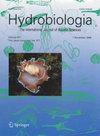Soft corals (Cnidaria: Anthozoa: Octocorallia) of the offerings 178 and 179 of the Templo Mayor of Tenochtitlan, Mexico
IF 0.3
4区 生物学
Q4 MARINE & FRESHWATER BIOLOGY
引用次数: 0
Abstract
Background. Since 1978, more than 200 offerings have been studied in the archeological zone of the Templo Mayor of Tenochtitlan, where an enormous diversity of cultural objects, as well as rests of human beings, plants, and animals, including several coral species have been found. The offerings 178 and 179 were exca-vated recently, as they were discovered in 2019, and due to the type of material, but mainly because of the number of specimens, its excavation process and study have been slow and meticulous, and it is unfinished yet in the 178. Objectives. This study describes the soft corals deposited in these two offerings. Methods. Excavation, extraction, cleaning, and preservation of the corals were performed according to the Proyecto Templo Mayor protocol. Due to the state of conservation of the samples, and the effects of almost 500 years of burial, taxonomic identification was made considering the external morphological characteristics. Results. Until now, in both offerings, there are four species of gorgonians of the genus Pacifigorgia (Cnidaria: Anthozoa: Octocorallia: Gorgoniidae), currently distributed on the Mexican Pacific coast. In Offering 178, three species are registered, and four in Offering 179. Conclusions. The relevant aspect of these offerings, in particular Offering 178, is the exceptional amount of buried corals, because both contain more than 150 entire colonies and almost 300 lots of fragments, for a total of 454 corals, a number never recorded previously in any other offering in the heart of ancient Tenochtitlan during the last 45 years of excavations. Because the study of corals of the sacred temple will continue due to more excavation of offerings, the number of species and specimens will increase in the future.墨西哥特诺奇蒂特兰市马约尔神庙178号和179号祭品中的软珊瑚(刺胞目:珊瑚虫目:八珊瑚目)
背景。自1978年以来,在特诺奇蒂特兰的马约尔神庙考古区研究了200多个供品,在那里发现了各种各样的文物,以及人类,植物和动物的遗骸,包括几种珊瑚物种。第178号和第179号文物是在2019年发现的,最近才被挖掘出来,由于材料的类型,但主要是因为标本的数量,它的挖掘过程和研究一直缓慢而细致,178号文物尚未完成。目标。本研究描述了在这两个产品中沉积的软珊瑚。方法。珊瑚的挖掘、提取、清洁和保存都是根据Proyecto Templo Mayor协议进行的。由于标本保存状况较差,加之近500年的埋藏影响,根据其外部形态特征进行了分类鉴定。结果。到目前为止,在这两个供品中,有四种太平洋柳珊瑚属的柳珊瑚(刺胞目:珊瑚虫目:八珊瑚目:柳珊瑚科),目前分布在墨西哥太平洋沿岸。祭品178中记载了3种,祭品179中记载了4种。结论。这些出土品,特别是第178号出土品,与埋藏珊瑚的数量有关,因为它们都包含150多个完整的珊瑚群和近300个碎片,总共有454个珊瑚,在过去45年的挖掘中,在古代特诺奇蒂特兰中心的任何其他出土品中都没有记录过这个数字。由于挖掘更多的供品,对寺庙珊瑚的研究将继续进行,未来物种和标本的数量将会增加。
本文章由计算机程序翻译,如有差异,请以英文原文为准。
求助全文
约1分钟内获得全文
求助全文
来源期刊

Hidrobiologica
生物-海洋与淡水生物学
CiteScore
0.40
自引率
0.00%
发文量
8
审稿时长
>12 weeks
期刊介绍:
HIDROBIOLÓGICA es una publicación cuatrimestral que difunde trabajos originales e inéditos de investigación o revisión, sobre temas relacionados con los organismos y la hidrología de los ambientes acuáticos, dulces y marinos y va dirigida a investigadores de todo el mundo, interesados en las diversas disciplinas que incluye la Hidrobiología , así como a alumnos de posgrados y licenciaturas relacionados con la biología, ecología, taxonomía, filogenia y evolución de organismos acuáticos, e hidrología y oceanografía de ambientes s dulceacuícolas y marinos.
 求助内容:
求助内容: 应助结果提醒方式:
应助结果提醒方式:


